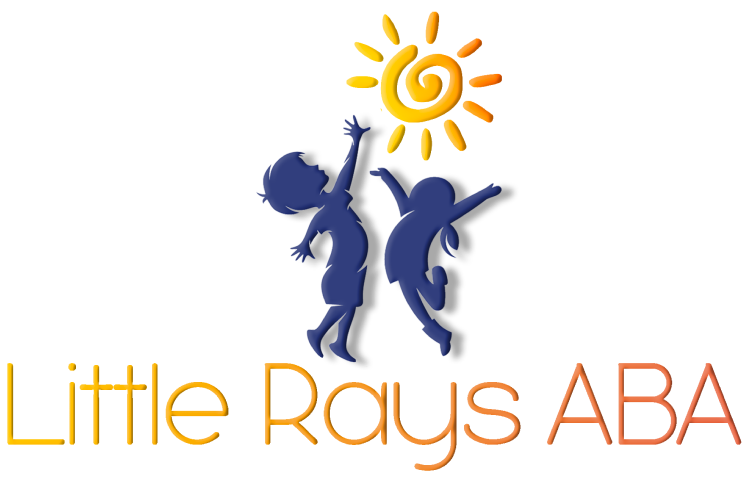Understanding Autism Levels
Understanding the levels of autism spectrum disorder (ASD) is paramount for parents seeking to support their children effectively. The categorization of autism levels helps identify the severity of the condition and tailors appropriate interventions.
Diagnostic Criteria Overview
The American Psychiatric Association's Diagnostic and Statistical Manual, Fifth Edition (DSM-5), provides standardized criteria to diagnose autism spectrum disorder. According to the DSM-5, an autism diagnosis requires persistent deficits in social communication and social interaction across various contexts.
These are characterized by deficits in social-emotional reciprocity, nonverbal communicative behaviors, and developing, maintaining, and understanding relationships. In addition to social deficits, autism is also marked by restricted, repetitive patterns of behavior.
Spectrum of Autism Severity
ASD is a "spectrum" disorder, meaning its symptoms and severity can vary widely among individuals. The concept of a spectrum helps in understanding the diverse and multifaceted nature of autism. The DSM-5 categorizes autism severity into three levels based on the level of support required:
| Level | Severity Description | Support Needed |
|---|---|---|
| Level 1 | Requiring Support | Individuals may have noticeable difficulties in social interaction and struggle with organization and planning. Needs some support but can function independently with minimal intervention. |
| Level 2 | Requiring Substantial Support | Individuals with more severe social communication and interaction deficits exhibit more pronounced restrictive or repetitive behaviors and require substantial support to function. |
| Level 3 | Requiring Very Substantial Support | Individuals with severe deficits in social communication and interaction have highly noticeable restricted or repetitive behaviors and need substantial intervention and continuous support for daily activities. |
The severity levels help clinicians assess the child's condition accurately and develop a tailored intervention plan. Early intervention is crucial as it can lead to improved outcomes and may even alter a child's life trajectory. Starting interventions as early as possible is pivotal to leverage the brain's plasticity during the early developmental years.
The criteria and levels provided by the DSM-5 offer a comprehensive framework to diagnose and understand ASD. By grasping these levels, parents, caregivers, and professionals can better navigate the complexities of autism and ensure effective management strategies.
Social Communication Deficits
Individuals with autism spectrum disorder (ASD) exhibit distinct social communication deficits. According to the Diagnostic and Statistical Manual of Mental Disorders (DSM-5), these deficits must be persistent and occur across various contexts.
Social-Emotional Reciprocity
Social-emotional reciprocity refers to the back-and-forth flow of social interaction and emotional exchange. For individuals with ASD, challenges in this area include difficulty initiating or responding to social interactions, reduced sharing of interests, emotions, or affect, and problems with normal back-and-forth conversations.
- Difficulty initiating social interactions: Not starting conversations
- Reduced sharing of emotions: Not showing emotions like happiness or sadness
- Lack of normal back-and-forth conversation: Difficulty keeping a conversation going
Understanding these deficits helps identify the level of social-emotional reciprocity issues, which is crucial in determining the autism spectrum disorder diagnostic criteria.
Nonverbal Communication
Nonverbal communicative behaviors are crucial for social interaction. Individuals with autism often struggle with nonverbal communication, which includes eye contact, facial expressions, gestures, and body language.
- Avoiding eye contact
- Using limited or inappropriate facial expressions
- Lack of gestures like pointing or waving
- Misinterpreting or not using body language effectively
These deficits in nonverbal communication contribute significantly to the challenges faced by individuals with ASD in social contexts. Recognizing and understanding these behaviors is essential for accurate diagnosis and appropriate intervention strategies.
Parents exploring the best approaches for their children can use this knowledge to seek tailored support and therapies that address these specific areas, ultimately improving their child's social communication skills. By breaking down the diagnostic criteria and understanding the nuances of social-emotional reciprocity and nonverbal communication, parents can better navigate the complexities of autism spectrum disorder.
Restricted & Repetitive Behaviors
Restricted and repetitive behaviors (RRBs) are a significant component of the diagnostic criteria for autism spectrum disorder (ASD). These behaviors are characterized by a limited range of activities, intense focus on specific interests, and the repetition of certain actions.
Definitions and Characteristics
RRBs can be broadly categorized into two types: repetitive motor behaviors and insistence on sameness. Understanding both types is essential, as they manifest differently across individuals.
Repetitive Motor Behaviors
These involve movements or vocalizations that are repeated over and over. Common examples include:
- Hand flapping
- Spinning objects
- Lining up toys
- Echolalia (repeating words or phrases)
These behaviors can be soothing for individuals with ASD but may interfere with daily activities and social interactions.
Insistence on Sameness
This aspect of RRBs involves a strong preference for routines and resistance to change. Individuals may become distressed if there are deviations from their expected pattern. Characteristics include:
- Strict routines and rituals
- Need for the same daily schedule
- Intense focus on specific subjects or interests
- Difficulty with transitions
Sensory Issues and Autism
Sensory issues form a vital part of the ASD diagnostic criteria and have been included in the DSM-V. These issues involve atypical responses to sensory stimuli, resulting in either hyper- or hypo-responsiveness.
Sensory Reactivity in ASD
Individuals may exhibit various sensory responses, both heightened and diminished:
- Hypersensitivity: Over-responsiveness to sensory stimuli. Examples include aversion to loud noises, bright lights, or certain textures.
- Hyposensitivity: Under-responsiveness to sensory stimuli. Examples include not responding to sounds and seeking intense sensory input like spinning or staring at lights for long periods.
Almost 90% of children with autism report sensory issues. Despite this prevalence, sensory problems are also common in other developmental disorders.
Types of Sensory Issues
The sensory issues in autism can be categorized based on reactivity:
| Sensory Issue Type | Description |
|---|---|
| Hyper-reactivity | Overreaction to sensory inputs (e.g., loud noises) |
| Hypo-reactivity | Underreaction to sensory inputs (e.g., not noticing pain) |
| Sensory Seeking | Unusual interest in sensory aspects of the environment (e.g., staring at flashing lights) |
| Sensory Avoiding | Avoidance of sensory inputs (e.g., avoiding noisy places) |
Understanding these sensory characteristics helps address the specific needs of individuals with autism. Parents must seek professional guidance to help manage these behaviors effectively and to create a supportive environment for their children.
Diagnosis and Evaluation Tools
Understanding the tools used to diagnose Autism Spectrum Disorder (ASD) can be crucial for parents navigating their child's condition. Two pivotal tools in diagnosing autism are the DSM-5 Criteria and the M-CHAT Screening Tool.
DSM-5 Criteria
The American Psychiatric Association's Diagnostic and Statistical Manual, Fifth Edition (DSM-5), is a standardized manual used widely to diagnose various mental health conditions, including ASD. The DSM-5 provides structured criteria essential for diagnosing ASD. The diagnosis entails persistent deficits in social communication and interaction, as well as restricted, repetitive patterns of behavior.
ASD diagnosis using the DSM-5 requires observing:
- Deficits in Social-Emotional Reciprocity: Issues with back-and-forth conversation, reduced sharing of interests or emotions, and failure to initiate or respond to social interactions.
- Nonverbal Communicative Behaviors: Problems with eye contact, body language, and understanding facial expressions and gestures.
- Relationships: There is difficulty developing, maintaining, and understanding relationships, ranging from a lack of interest in peers to challenges in adjusting behavior to various social contexts.
Additionally, the DSM-5 identifies the following restricted and repetitive behaviors:
- Repetitive Motor Movements, Use of Objects, or Speech: Lining up toys, echolalia, and idiosyncratic phrases.
- Insistence on Sameness: Inflexibility to changes in routines or rituals.
- Fixated Interests: Strong attachment to unusual objects or subjects.
- Hyper- or Hyporeactivity to Sensory Input: Indifference to temperature, adverse response to specific sounds or textures.
M-CHAT Screening Tool
The Modified Checklist for Autism in Toddlers (M-CHAT) is a reliable screening tool for children aged between 16 and 30 months. The M-CHAT consists of 23 'yes/no' items that span various developmental domains and involve an interview with parents to identify potential signs and symptoms of ASD.
The M-CHAT aims to detect possible signs of autism early, which is crucial for timely intervention. The checklist evaluates various behaviors and responses, focusing on:
- Communication Skills: Responses to social interactions and verbal/nonverbal communication.
- Social Skills: Eye contact, sharing interests, and pointing to show objects.
- Behavioral Patterns: Repetitive motions, reactions to sensory experiences, and interest in certain activities.
| Tool | Age Range | Key Areas Assessed | Administration Method |
|---|---|---|---|
| DSM-5 | All ages | Social communication, repetitive behaviors | Clinical observation, interviews |
| M-CHAT | 16-30 months | Communication skills, social skills, behavioral patterns | Parent questionnaire, interview analysis |
Understanding these diagnostic tools helps parents work effectively with healthcare professionals to evaluate their child's condition and navigate the path toward suitable interventions.
Gender Differences and Prevalence
Understanding the gender differences and prevalence of autism spectrum disorder (ASD) is crucial for parents who are navigating their children's diagnosis. Various studies have provided insights into how frequently autism occurs and how its prevalence differs between males and females.
Prevalence in Males vs. Females
ASD is generally more prevalent in males than females, with the ratio of males to females ranging from 2:1 to 5:1. This significant difference suggests that males are more likely to be diagnosed with autism compared to females.
In terms of social communication disorder (SCD), which is closely related to autism, the ratio is also skewed towards males. Studies have shown that developmental disabilities associated with SCD have a male-to-female ratio of approximately 2.5:1.
Global Prevalence Statistics
Autism spectrum disorder is a global phenomenon, with varying prevalence rates in different regions. According to a global estimate, the prevalence of autism was approximately 1 in 132 individuals (7.6 per 1,000) as of 2010. In the United States, the prevalence is even higher, with 1 in 54 children diagnosed with ASD in 2016.
Understanding these statistics can help parents better comprehend the broader context of their child's diagnosis. Recognizing the higher prevalence in males can also help in the early identification and prompt intervention of boys who may present with signs of autism.
Early Intervention Importance
Early intervention for autism spectrum disorder (ASD) plays a critical role in shaping positive outcomes for children. By addressing developmental challenges at an early age, children with autism can experience significant benefits that may influence their long-term life trajectory.
Benefits of Early Interventions
Early interventions can start as early as two years of age and have profound positive impacts on children with autism. These interventions, often involving specialized therapies and educational programs, are designed to address the unique needs of each child.
Here are some key benefits of early interventions:
- Enhanced Communication Skills: Children receiving early intervention often show marked improvements in verbal and nonverbal communication abilities.
- Improved Social Interaction: Early interventions can help children develop better social skills, enabling them to interact more effectively with peers and adults.
- Reduced Behavioral Issues: Targeted therapies can help manage and decrease restricted and repetitive behaviors, common in autistic children.
- Greater Academic Achievement: With early support, children often perform better academically, as they are better equipped to handle the challenges of a structured educational environment.
Studies have shown that these early interventions can lead to improved long-term outcomes, with some children no longer meeting the criteria for autism spectrum disorder as they grow older.
Little Rays ABA is Florida’s top choice for personalized ABA therapy, specializing in understanding the complexities of autism at every level. Their experienced team designs individualized programs to address specific needs, helping children thrive across various developmental stages.
If you’re looking for expert support to navigate your child’s autism journey, contact Little Rays ABA today and discover how their tailored strategies can foster meaningful progress.
Life Trajectory Impact
The impact of early intervention extends beyond immediate improvements, significantly altering the life trajectory of children with autism.
- Independence and Daily Functioning: Children who receive early intervention are more likely to develop essential life skills, promoting greater independence in daily activities.
- Employment Opportunities: As they grow older, individuals who have early interventions are often better equipped for the workforce, leading to increased employment opportunities.
- Quality of Life: Ultimately, early intervention can lead to a higher overall quality of life, with greater potential for personal and professional fulfillment.
By understanding and leveraging the benefits of early intervention, parents and caregivers can help ensure that children with autism achieve their fullest potential. This proactive approach makes a meaningful difference in the lives of these children, paving the way for a brighter future.
Navigating autism levels is essential for determining the right support strategies. ABA therapy and supporting services play a crucial role in providing personalized care for individuals across the spectrum. If you're looking for tailored programs that can support your child’s development, reach out today to explore how expert services can create meaningful progress in your child’s life.
Sources:
https://www.cdc.gov/autism/hcp/diagnosis/index.html
https://www.autismspeaks.org/autism-diagnostic-criteria-dsm-5
https://www.ncbi.nlm.nih.gov/books/NBK573609/
Unlock Your Child's Potential with Expert ABA Therapy!
At Little Rays ABA, we provide compassionate, evidence-based ABA therapy to help children with autism thrive. Our personalized approach fosters growth in communication, social skills, and independence.
Get In Touch With Us Today to Get Started With ABA Therapy!
Related Posts
MENU
GET IN TOUCH
7117 San Salvador Dr Boca Raton, FL 33433
3200 Collins Ave Miami Beach, FL 33140





